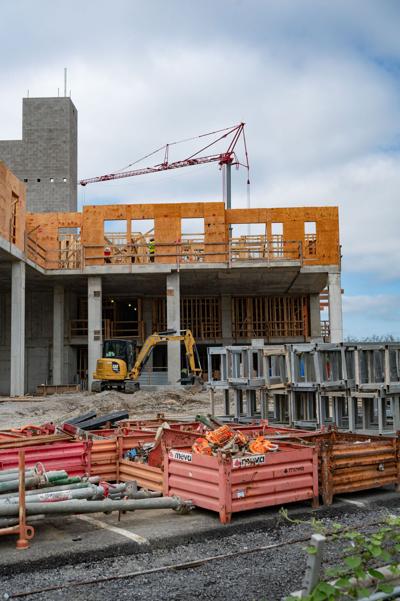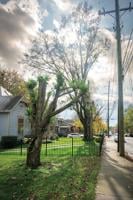
Armed with population graphs and color-coded maps, Metro planner Greg Claxton addressed a packed room at the Nashville Public Library’s Bordeaux Branch on March 11. He’s worried about the numbers coming across his desk — big numbers about housing that Nashville doesn’t have.
“ How do we close this gap in a way that works for all Nashvillians?” asked Claxton with the help of a bar graph and the steady demeanor of a chemistry teacher already anticipating follow-up questions. “ As we do that, we’re thinking of three things. The first is the need for abundant housing, because when housing is scarce, housing gets expensive. The second: We’ve gotta have the infrastructure that’s necessary to support that. The last is recognizing the distinctive character of the different places in Nashville.”
The evening briefing capped a two-month tour from Claxton and colleagues as part of the city’s Housing and Infrastructure Study — an appendix-like update to Nashville Next, the city’s general guiding planning document produced in 2015.
Development has become concentrated along corridors and in low-income areas
Estimates by the city and hired consultants project Nashville’s need at about 90,000 additional units over the next decade. That’s starting from a well-documented deficit in housing, particularly for lower-income households, a supply shortage that has pushed population growth to surrounding areas like Murfreesboro, Mt. Juliet, Nolensville and Gallatin. Nashville real estate has stayed expensive and in short supply as wealthy buyers enter the market and longtime homeowners age in place.
Nashville could build about 70,000 units, planners say, leaving a 20,000-unit gap on top of the gap. The 70,000 projection is at the current rate of development, which already gives Nashvillians plenty to complain about. Claxton has the unenviable job of figuring out how to accelerate that pace by 30 percent — why is he, a technical bureaucrat tasked last year with a Housing and Infrastructure Study by the Metro Council, also answering to the public?
Reactionary resentment about traffic, development, tourists, short-term rentals, gentrification and housing, among other quality-of-life issues, has soured Nashville politics in its boom era. For at least two local election cycles, candidates have pitched voters on their strategy to address Nashville’s growing pains. Success comes with a balancing act — keep recruiting lucrative investment, jobs, tourism dollars and general city growth while minimally pissing off the roughly 700,000 people who live in Davidson County. Both former Mayor John Cooper and current Mayor Freddie O’Connell found winning combinations during their campaigns.
Politicians like Quin Evans Segall and Rollin Horton, councilmembers who backed several bills last year to facilitate denser development, faced organized outrage that sometimes veered into personal attacks. Horton watched last week’s meeting from the back of the room.
Planning’s Housing and Infrastructure meetings hit Green Hills, Donelson, Madison and Brantioch like a vaccine against neighborhoods that may resist Nashville’s higher-density future. Behind Claxton’s diplomatic language and his speaking series’ tactful title, “Community Conversations,” slides conveyed the city’s desperate need for more, denser, faster building. The message appeared to get through.
For the politicians and planners, the challenge ahead will be guiding growth that brings amenities and affordability.
Nonprofits, arborists and others are guarding our trees from invasive species, storms — and humans
Decades ago, majority-Black neighborhoods from Bordeaux to White’s Creek offered ample single-family housing with suburban density, rural pace and quick access to the city. Recent rapid building north of the Cumberland River — home to much of the county’s natural green space and tree canopy — has appeared even more stark against historic underinvestment.
“ While there may be a need for affordable housing, the Bordeaux community — the Black community — has had to bear the burden for decades of solving the city’s problems,” said one woman at the March 11 meeting. “ We don’t have sit-down restaurants, we don’t even have businesses to invest in. Developers are getting very aggressive, mentioning these 20,000 and 30,000 units, saying they’re being told to come to us. We know they’re not going to places like Green Hills.”
Franklin Bennett, a 35-year Bordeaux resident, specifically mentioned the fully redeveloped intersection at 51st Avenue and Centennial Boulevard that anchors The Nations.
“ We’ve seen development all over the city,” said Bennett from the audience. “Why can’t we get some decent grocery stores over here? I want to see that on Clarksville Highway. We pay taxes just like everybody else, and we’re sick and tired of being pushed to the side.”







